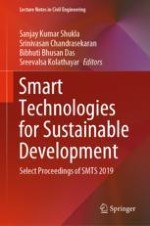2021 | OriginalPaper | Chapter
A Review on the Properties of Steel-Concrete Interface and Characterization Methods
Authors : E. P. Sumukh, Sharan Kumar Goudar, Bibhuti Bhusan Das
Published in: Smart Technologies for Sustainable Development
Publisher: Springer Singapore
Activate our intelligent search to find suitable subject content or patents.
Select sections of text to find matching patents with Artificial Intelligence. powered by
Select sections of text to find additional relevant content using AI-assisted search. powered by
